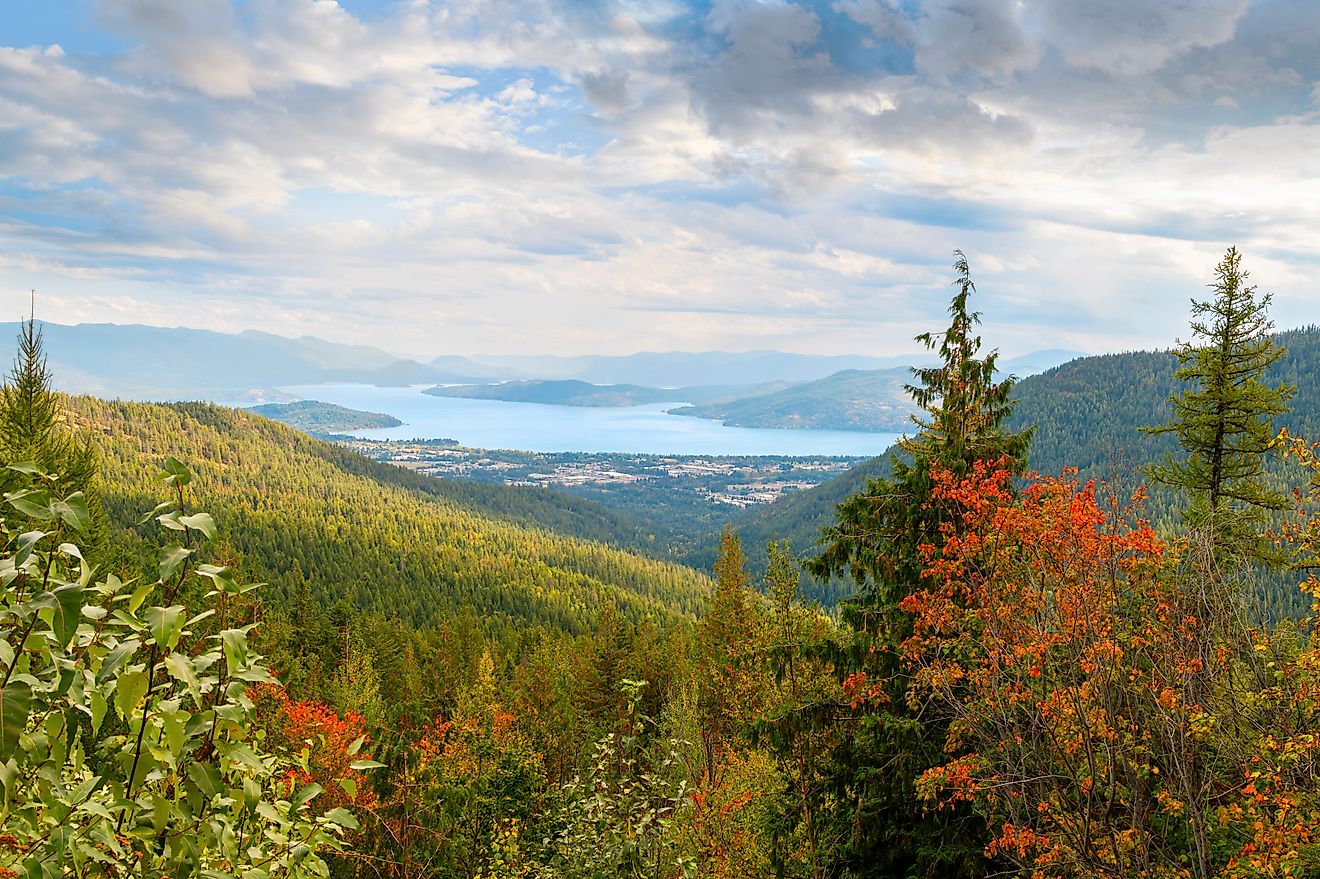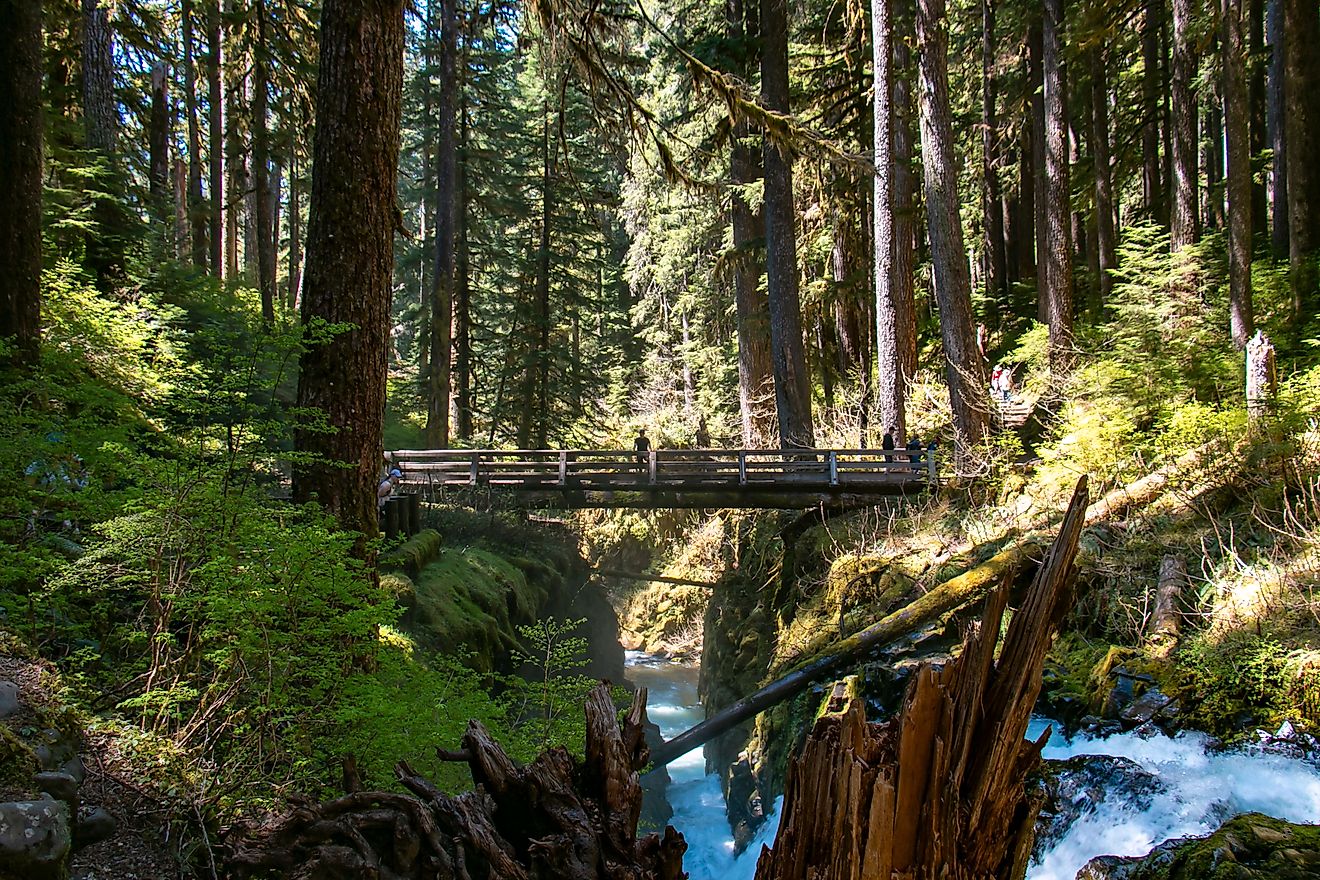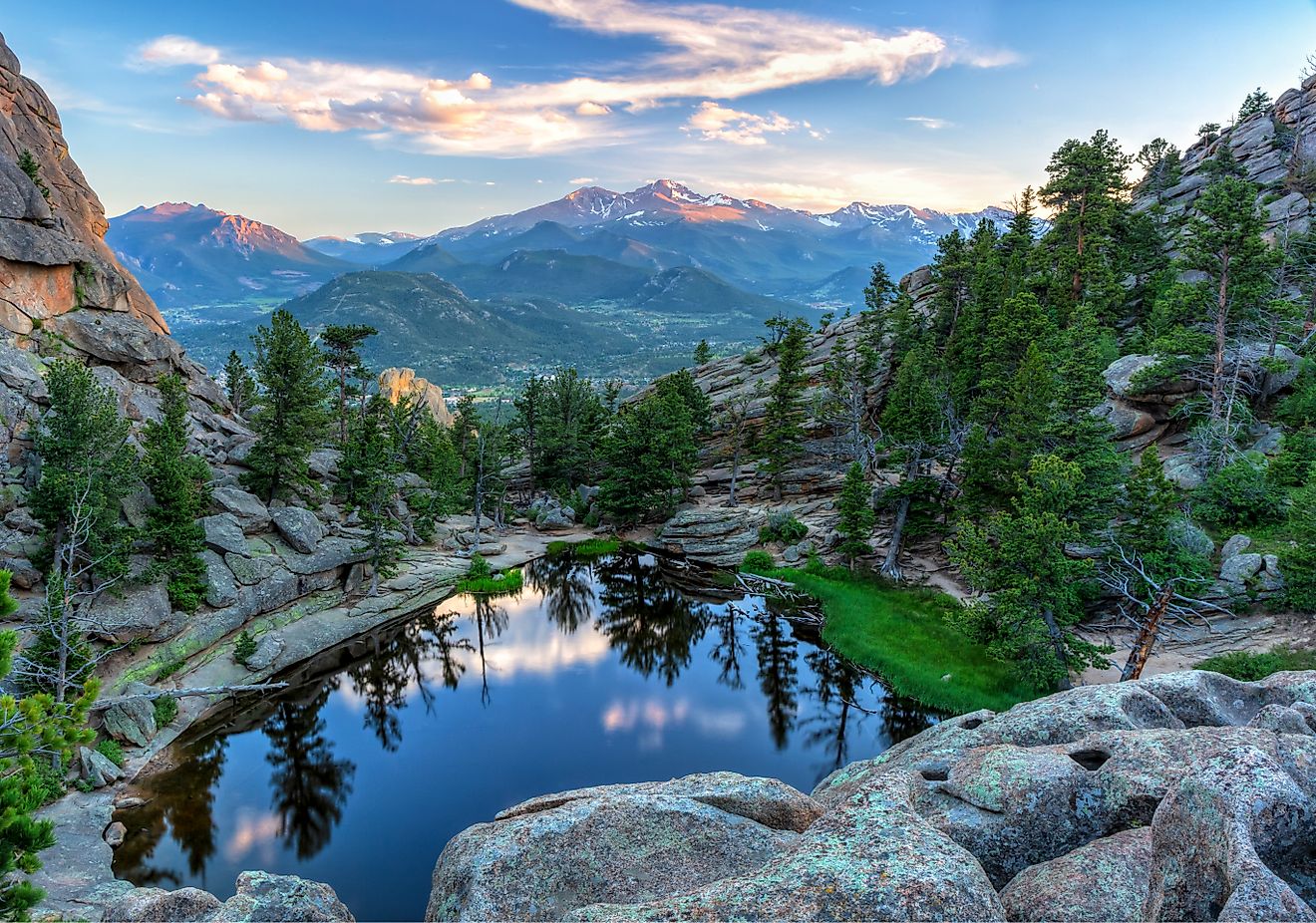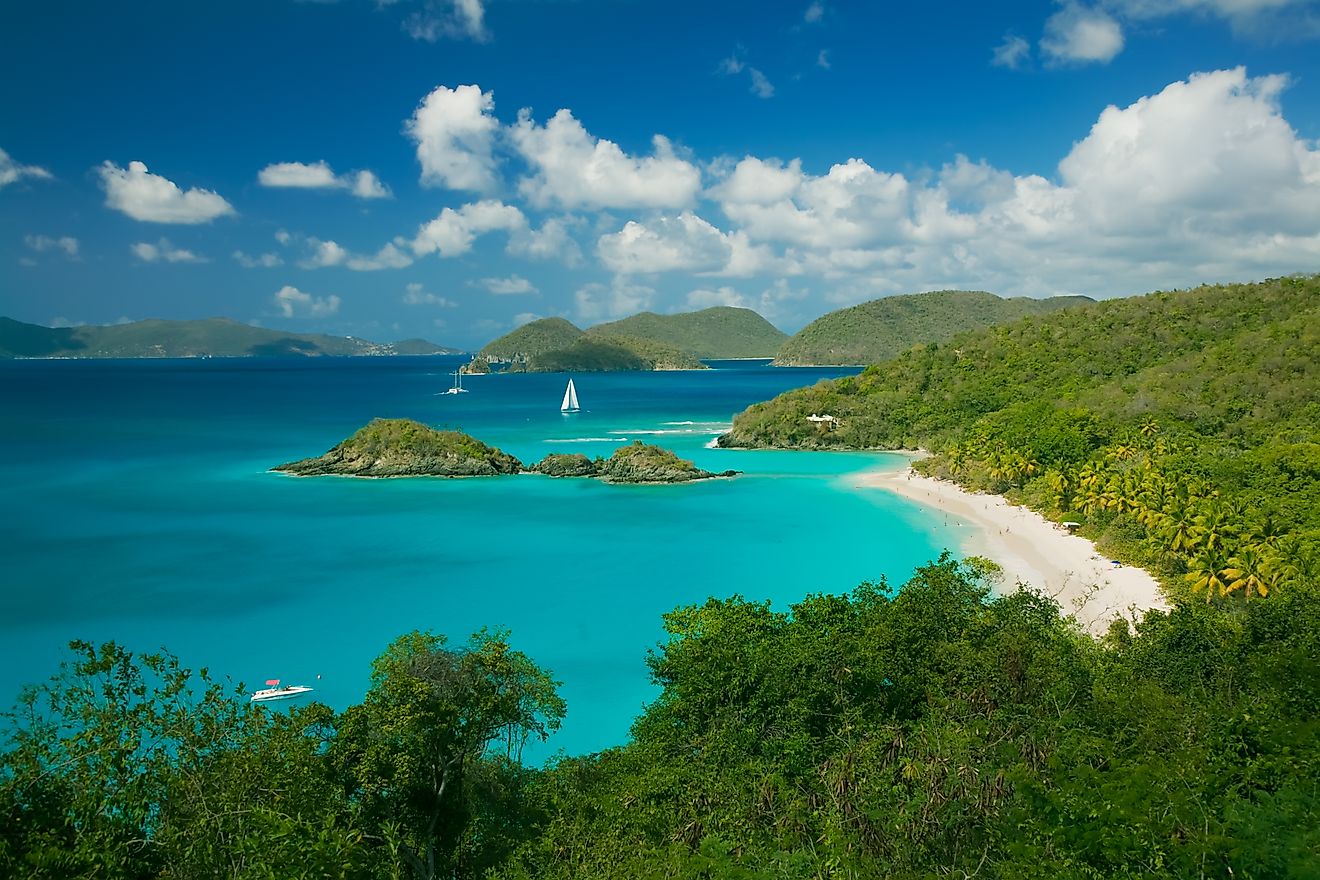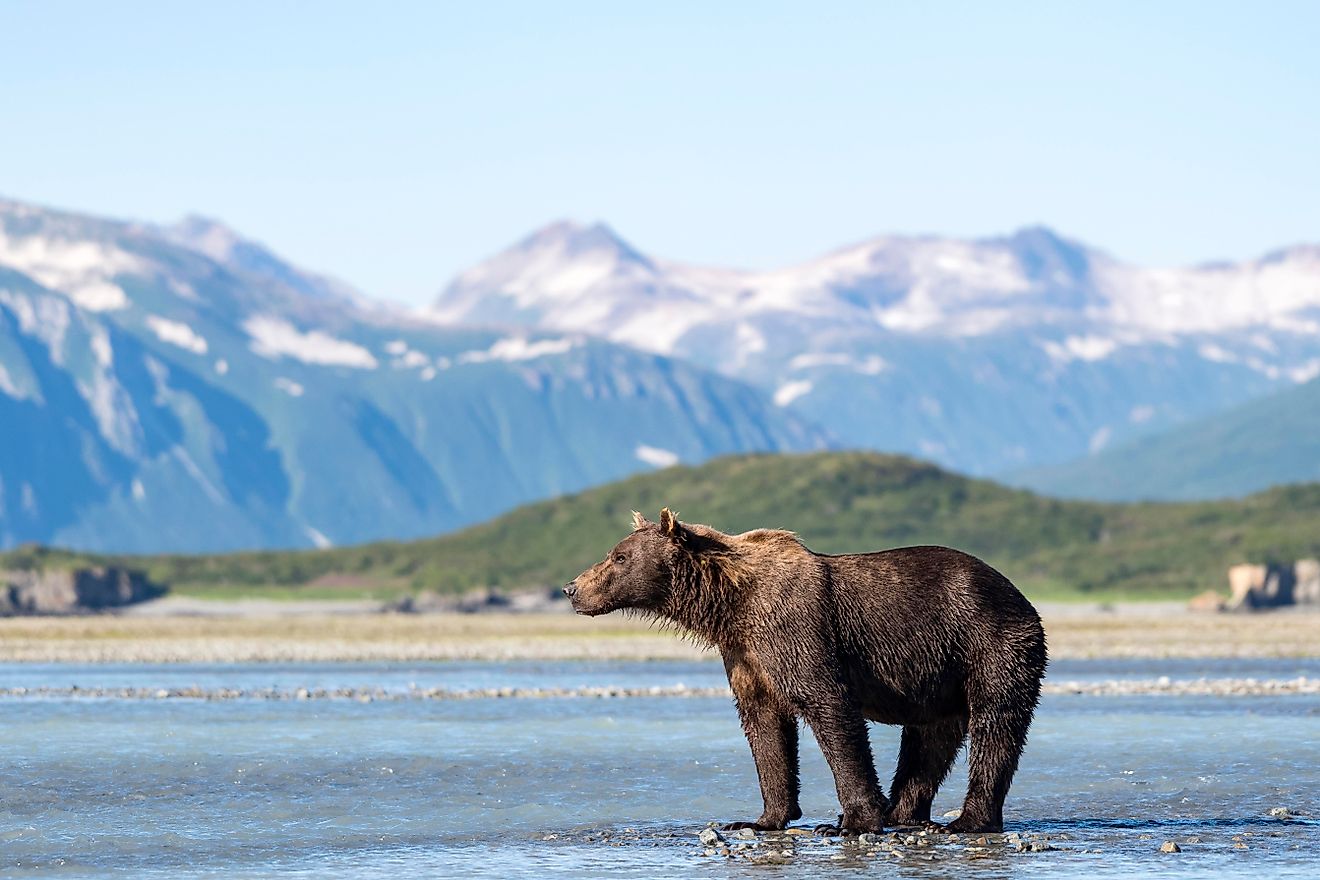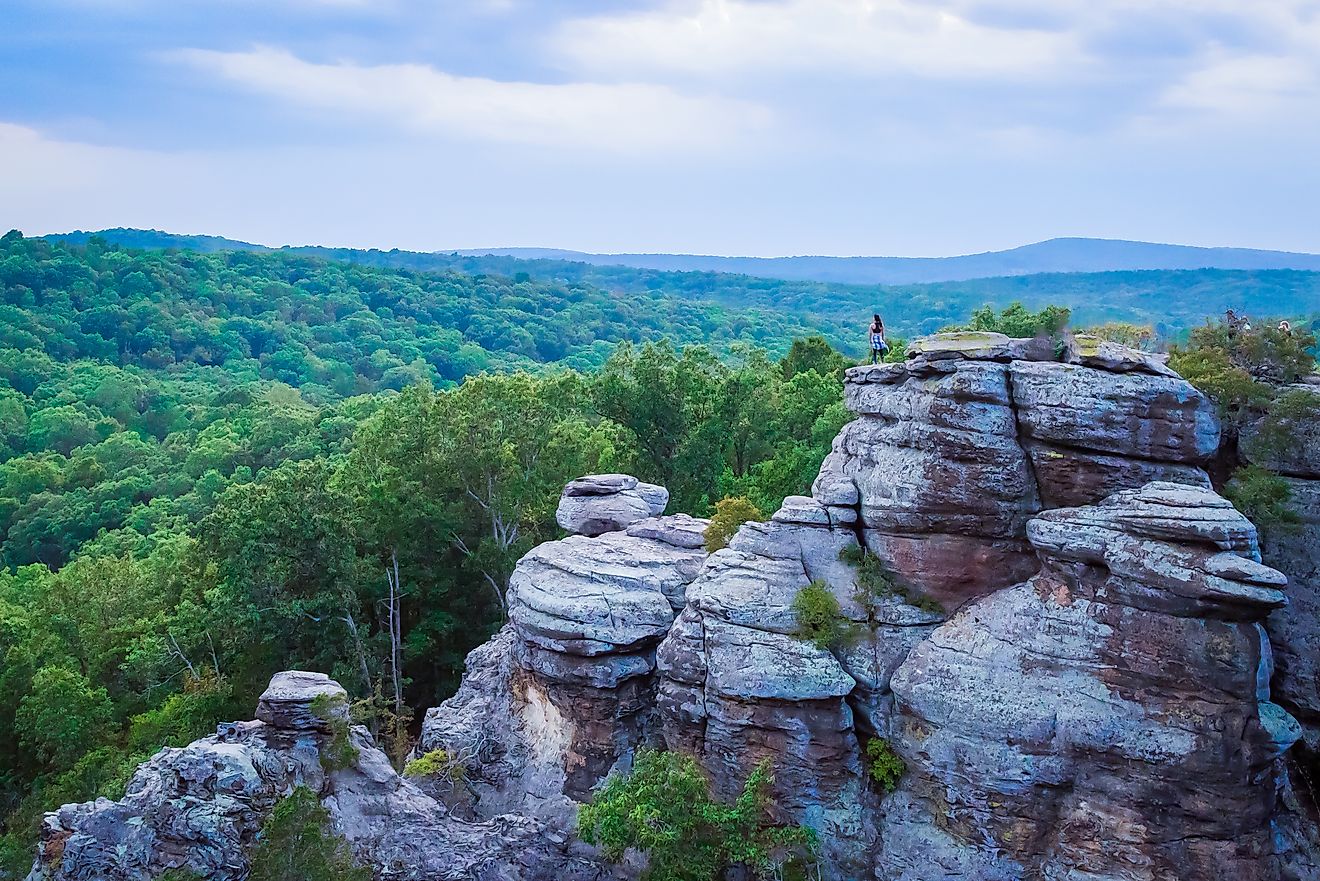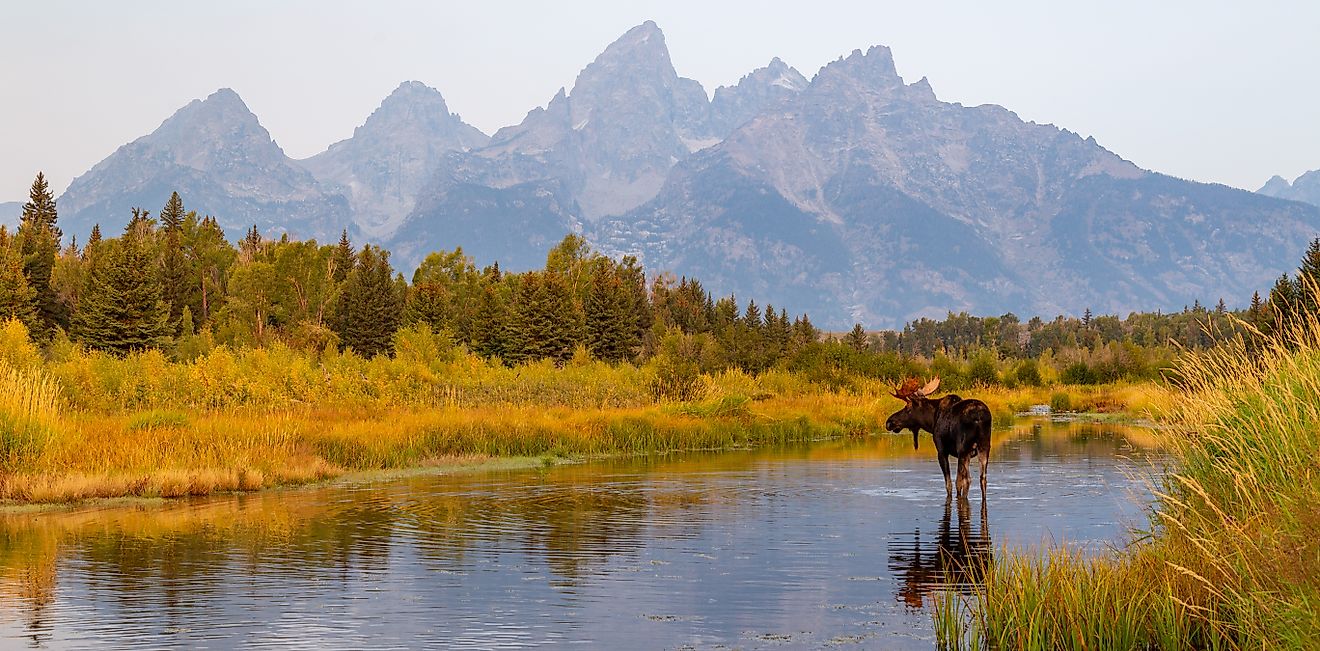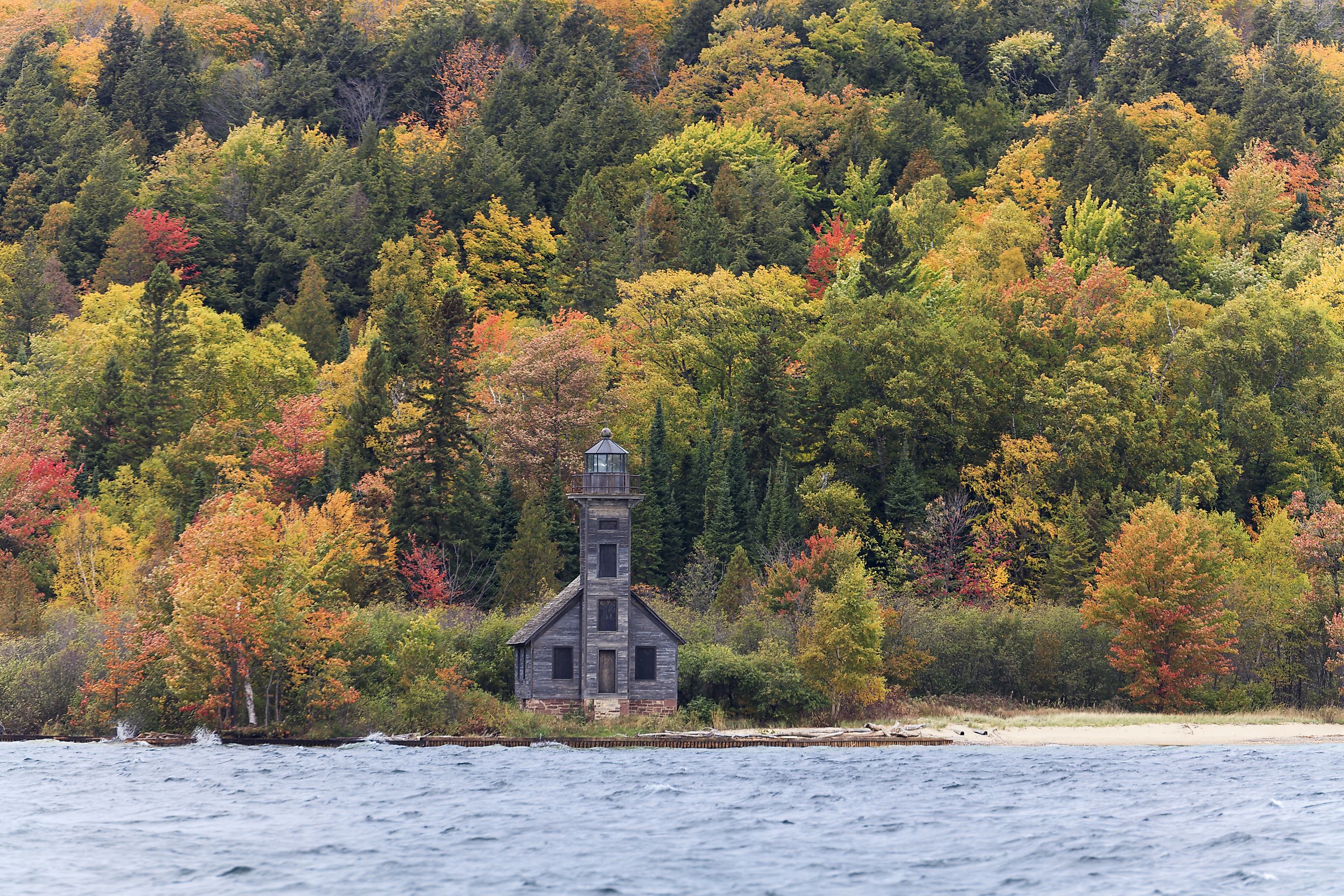
Hiawatha National Forest
Stretching across nearly 895,000 acres in Michigan’s Upper Peninsula, Hiawatha National Forest is a place where wilderness meets water on a grand scale. With over 100 miles of shoreline touching three Great Lakes, this vast forest is a haven for outdoor recreation, rich biodiversity, and living history. It offers a little bit of everything: lighthouses perched above crashing waves, miles of hiking and snowmobiling trails, scenic rivers winding through hardwoods, and quiet pockets where moose, black bears, and bald eagles roam.
If you have ever wondered where you can hike past waterfalls in the morning, kayak on a Great Lake in the afternoon, and end your day by a campfire under a snowy sky in winter, Hiawatha National Forest might just be the answer. Managed by the U.S. Forest Service, this protected land is split into two units, East and West, each with its own landscapes, communities, and character. Together, they form one of the Upper Peninsula’s most versatile and breathtaking outdoor destinations.
Where Exactly Is Hiawatha National Forest?
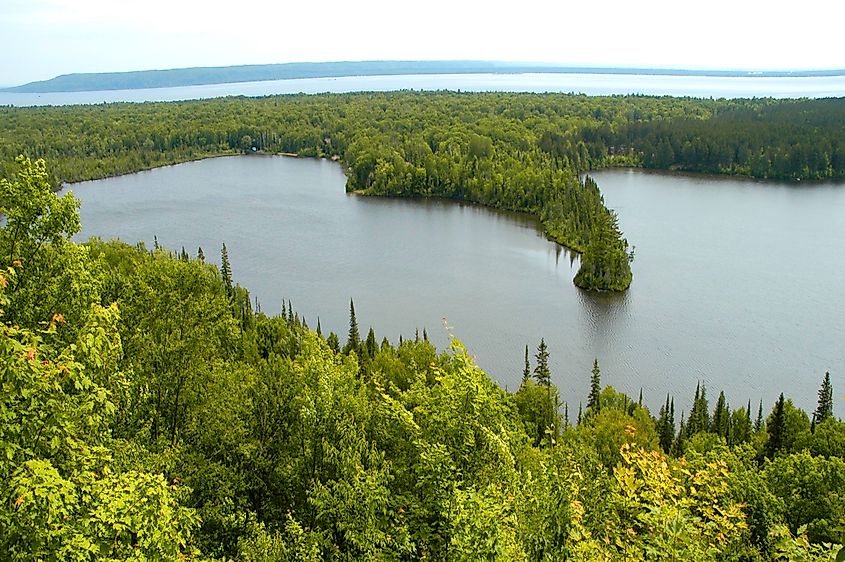
Hiawatha National Forest spans parts of six counties: Chippewa, Delta, Mackinac, Alger, Schoolcraft, and Marquette. The East Unit occupies about 44 percent of the forest’s total land area and includes stretches of Lake Superior, Lake Michigan, and Lake Huron shoreline, while the West Unit covers the remaining 56 percent and borders landmarks such as Pictured Rocks National Lakeshore and the Grand Island National Recreation Area.
The forest’s headquarters are located in Gladstone, Michigan, with ranger district offices in Sault Ste. Marie, St. Ignace, Manistique, Munising, and Rapid River. This strategic placement allows easy access from many Upper Peninsula towns and makes Hiawatha a manageable destination for weekend trips or extended stays.
A Landscape Shaped by History
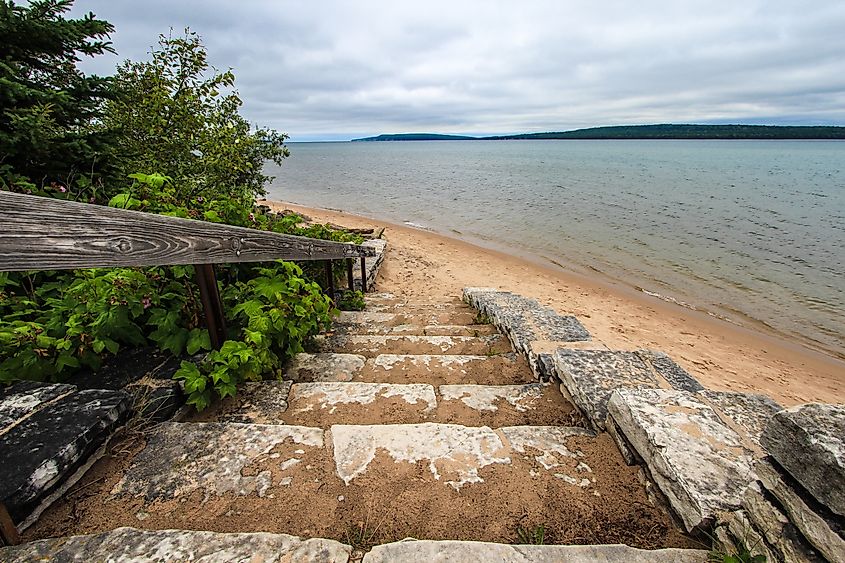
Hiawatha National Forest is more than a recreational area; it is a landscape with a complex past. The East Unit was once an infertile sandy expanse that resisted farming and settlement. In 1909, President Theodore Roosevelt designated part of this land as Marquette National Forest, laying the groundwork for what would eventually become Hiawatha National Forest in 1962. The West Unit came into existence in 1931 and saw extensive replanting efforts led by the Civilian Conservation Corps during the 1930s.
The forest’s name honors the Mohawk chief Hiawatha, who played a central role in forming the Iroquois Confederacy and was immortalized in Henry Wadsworth Longfellow’s poem, “The Song of Hiawatha.” Today, the land serves as a bridge between the past and present, offering spaces where nature thrives alongside industries like commercial logging and shipping.
What Makes Hiawatha National Forest Special?
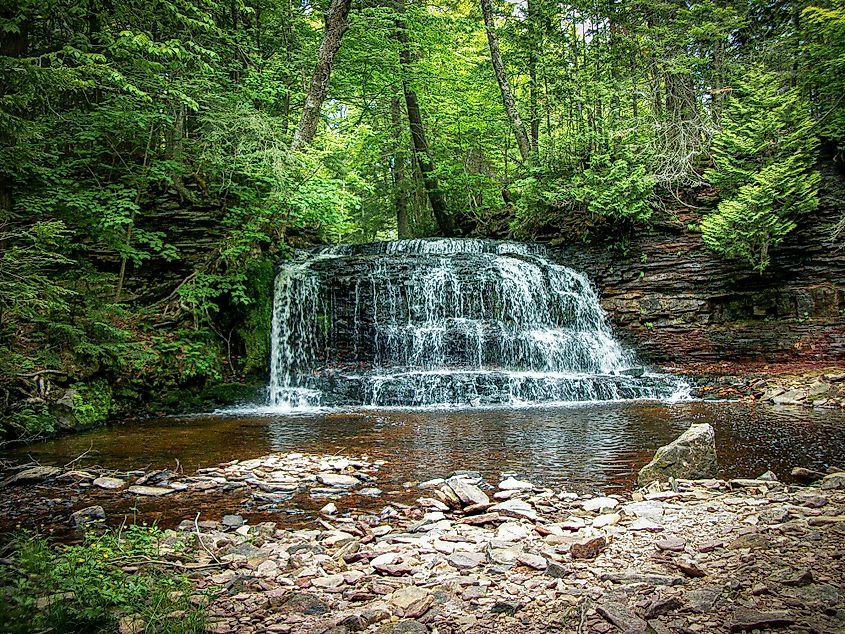
Few national forests in the United States can claim such diverse and abundant access to water. Hiawatha borders three Great Lakes and contains five designated Wild and Scenic Rivers: the Carp, Indian, Sturgeon, Tahquamenon (East Branch), and Whitefish Rivers. Its shores are dotted with lighthouses like the iconic Point Iroquois Light, which now serves as a museum overlooking Lake Superior.
Beyond the water, the forest includes six designated wilderness areas: Big Island Lake, Delirium, Horseshoe Bay, Mackinac, Rock River Canyon, and Round Island. Each offers solitude and natural beauty that range from rugged sandstone cliffs to dense maple-birch forests.
Wildlife and Ecology
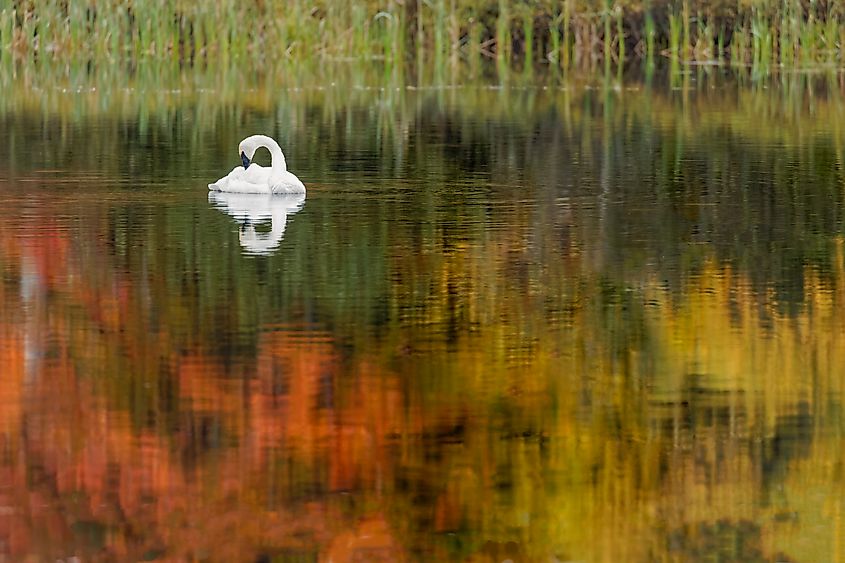
Hiawatha National Forest is a haven for wildlife enthusiasts. Timber wolves, black bears, and moose move through its dense forests, while bald eagles and golden eagles soar overhead. Beavers, river otters, and muskrats inhabit the waterways, and sandhill cranes frequent the wetlands. For those with sharp eyes and patience, the forest also hosts elusive species such as Canadian lynxes and cougars.
In autumn, the sugar maple and paper birch communities in the northern sections put on a spectacular display of color. In winter, the forest transforms into a snow-covered wilderness, with some areas receiving up to 200 inches of snowfall annually.
Outdoor Adventures for Every Season
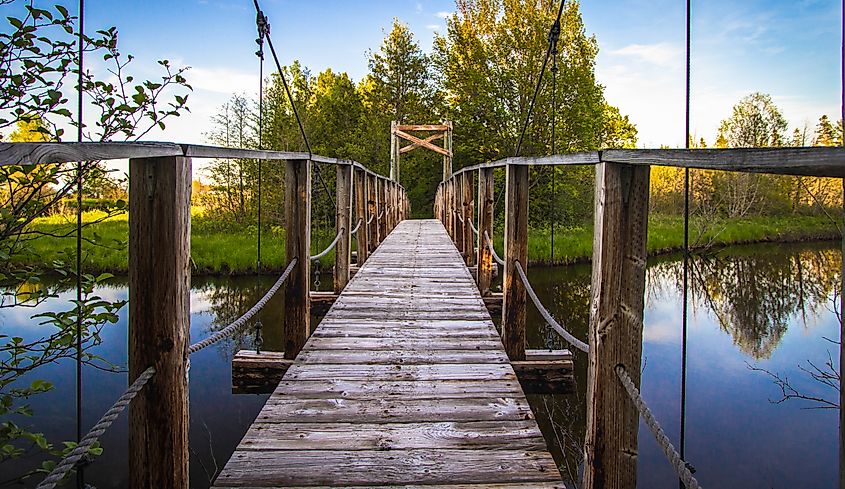
Hiawatha National Forest is a year-round playground. In summer, visitors flock to its beaches for swimming, fishing, and sea kayaking. More than 75 lakes and 600 miles of streams offer opportunities for catching warmwater and coldwater species. Canoe trails wind through peaceful waters, while waterfalls beckon hikers with their refreshing mist.
The North Country Trail, one of the longest hiking trails in the United States, cuts through the forest, offering long-distance trekkers and day hikers a chance to experience its varied terrain.
Winter brings its own set of adventures. Nearly 90 miles of cross-country ski trails invite skaters and diagonal-stride skiers, while hundreds of miles of snowmobile trails connect with Michigan’s statewide network. Snowshoeing, ice fishing, and even dog sledding add to the season’s charm. For an immersive winter escape, the forest offers two rentable log cabins tucked away in the snow.
A Shoreline Rich in History and Scenery
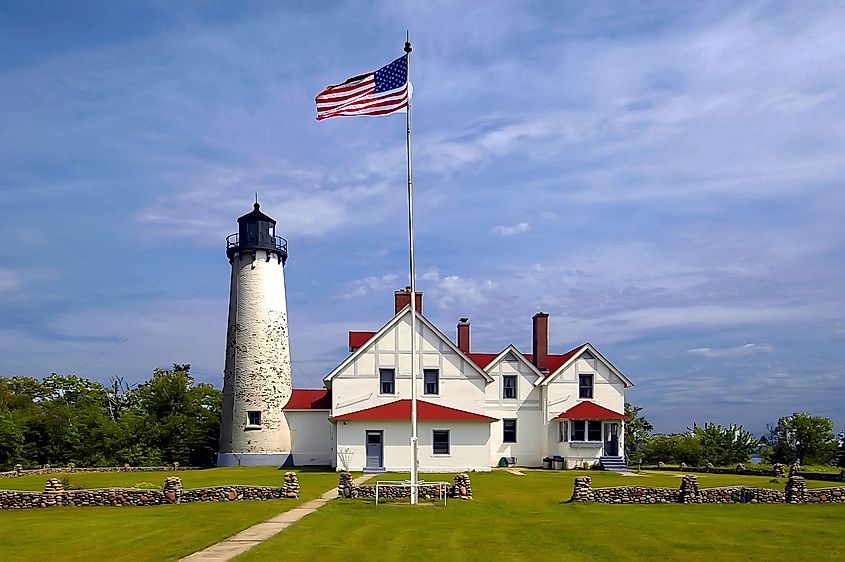
With more than 100 miles of shoreline, Hiawatha National Forest plays an important role in Michigan’s maritime history. The Point Iroquois Light, standing 65 feet tall above Lake Superior, once guided ocean-going freighters through the narrow channel connecting Whitefish Bay to the St. Mary’s River and the Soo Locks. Today, visitors can climb its spiral staircase to take in sweeping views of Canada, passing ships, and the deep blue expanse of the lake.
Round Island, located off Mackinac Island in Lake Huron, adds a touch of wilderness to the tourist-heavy straits. Its lighthouse stands as a sentinel to passing vessels, while the island itself remains largely undeveloped.
Camping and Overnight Stays
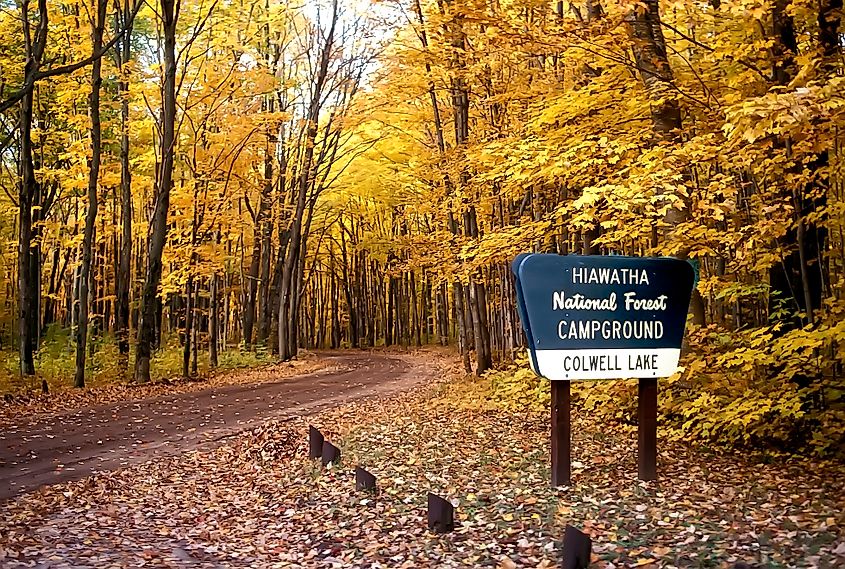
Hiawatha National Forest is well-equipped for camping, whether you prefer rustic campsites or developed campgrounds with modern amenities. Campers can set up along the lakeshores, near rivers, or in forested areas for a peaceful night under the stars. The forest’s location makes it a popular getaway for travelers from Michigan, Wisconsin, and neighboring states.
In addition to camping, nearby towns such as Munising and St. Ignace provide lodging, dining, and supply options for those who want to explore the forest without roughing it.
Lighthouses, Islands, and Scenic Stops
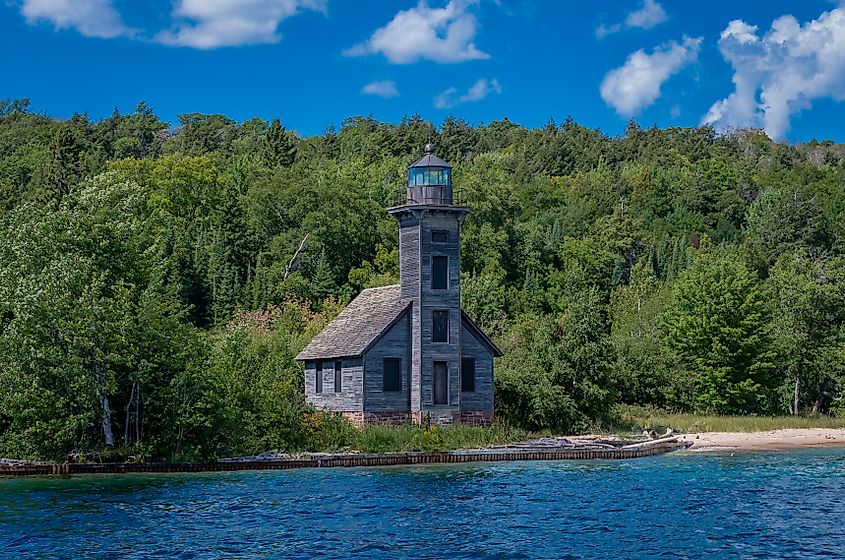
Part of the magic of Hiawatha lies in its many hidden gems. Grand Island National Recreation Area offers hiking, biking, and beaches just a short ferry ride from Munising. The sand dunes near St. Ignace create a dramatic contrast to the dense forests further inland. The Squaw Creek Old Growth Area preserves ancient trees that hint at the region’s pre-settlement landscape.
Lighthouses dotting the forest’s lakeshores are as photogenic as they are historic. Some, like Point Iroquois, welcome visitors, while others stand as quiet reminders of the region’s maritime past.
Planning Your Visit

The forest is open year-round, but the best time to visit depends on what you want to experience. Summer is ideal for hiking, kayaking, and fishing. Fall brings brilliant foliage, cool air, and fewer crowds. Winter transforms Hiawatha into a snow sports destination, while spring reveals waterfalls at their fullest.
Before you go, check with ranger district offices in Sault Ste. Marie, St. Ignace, Manistique, Munising, or Rapid River for maps, permits, and seasonal updates. Many areas are easily accessible by car, but some wilderness zones and islands require a bit more planning.
A Forest That Connects Land, Water, and People
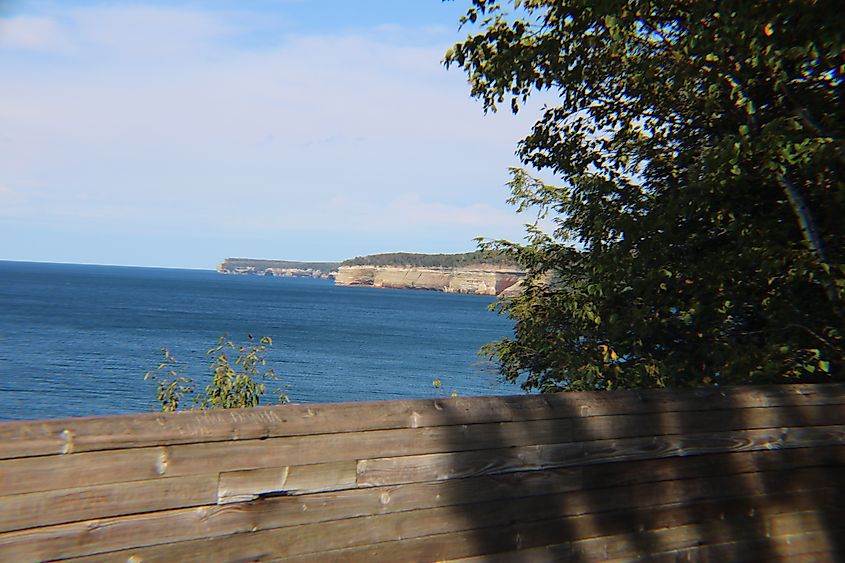
Hiawatha National Forest is more than a scenic stop in the Upper Peninsula; it is a living, breathing part of Michigan’s natural and cultural fabric. From its historic lighthouses and Civilian Conservation Corps reforestation efforts to its snow-laden winter trails and Great Lakes beaches, it captures the essence of the Northwoods.
Whether you are a seasoned outdoors enthusiast or a casual traveler seeking a peaceful escape, this national forest offers endless ways to connect with nature. Its miles of shoreline, historic landmarks, and year-round activities make it a place worth revisiting in every season.
Key Facts About Hiawatha National Forest
| Feature | Details |
|---|---|
| Total Area | 894,836 acres |
| Great Lakes Shoreline | Over 100 miles (Lakes Superior, Michigan, Huron) |
| Wilderness Areas | 6 designated areas |
| Wild & Scenic Rivers | 5 rivers |
| Lakes & Streams | 75+ lakes and 600 miles of streams |
| Hiking Trails | Part of the 4,600-mile North Country Trail |
| Winter Snowfall | Up to 200 inches in some areas |
| Camping Options | Rustic campsites and developed campgrounds |
| Headquarters | Gladstone, Michigan |
Frequently Asked Questions
What is Hiawatha National Forest known for?
It is known for its extensive Great Lakes shoreline, historic lighthouses, abundant wildlife, and year-round outdoor recreation opportunities.
Which Great Lakes border Hiawatha National Forest?
The forest touches Lake Superior, Lake Michigan, and Lake Huron, making it one of the few places in the country with access to three Great Lakes.
Is Hiawatha National Forest good for winter activities?
Yes. With nearly 90 miles of cross-country ski trails, hundreds of snowmobile routes, snowshoeing, and even winter cabin rentals, it is a winter wonderland.
Can you camp in Hiawatha National Forest?
Yes. Both rustic and developed campsites are available, with many located near lakeshores, rivers, and trailheads.
How big is Hiawatha National Forest?
It spans nearly 895,000 acres across Michigan’s Upper Peninsula, divided into East and West units.

